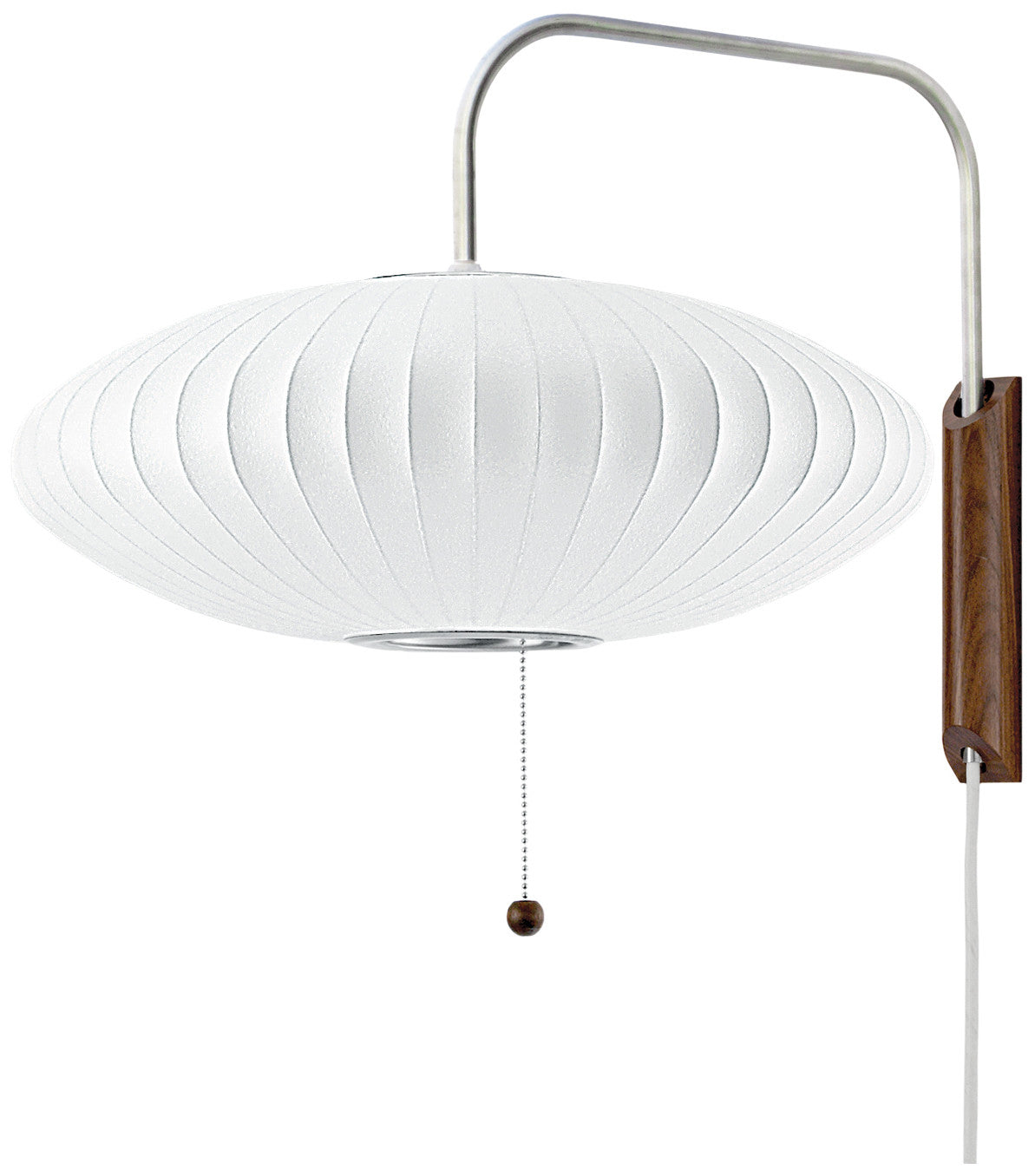Rmodern
Nelson Saucer Wall Sconce
Impossibile caricare la disponibilità di ritiro
The Original George Nelson Bubble Lamp Saucer Sconce is handsomely constructed with a 2-inch thick solid walnut wall-mount and a brushed-nickel steel arm that extends out approximately 14-inches. The arm has a swivel hinge and an adjustable 12-foot plug-in cord with a counterweight, that allows for height adjustments. This clever design allows one to adjust the sconce from left-to-right, and up-and-down, without having to change its position on the wall.
George Nelson designed the first lamps in 1947. These lamps with their simple sculptural shapes are constructed of an innovative taut plastic that coats a steel wire-frame. Nelson's unique design and ingenious use of materials prove to eliminate glare and provide an abundant, yet diffused light. A quality which alone is unique to this material.
Since 1989, Modernica has proven its steadfast commitment to authenticity and craftsmanship. Being at the forefront of rediscovering and relaunching out-of-production pieces, Modernica still uses the same methods and materials to handcraft each lamp that were used in 1952. The George Nelson Bubble Lamp collection is featured in the permanent collection of the Museum of Modern Art in New York. Modernica is the official site for the George Nelson Bubble Lamp Collection.
Handcrafted in Michigan, U.S.A.
Features
- Nelson Bubble Lamps collection
- Part of the Herman Miller Collection
- Designed in 1947
- Type: Wall light
- Color: White
- UL Listed
- The bracket finish is walnut and the arm finish is brushed nickel
- Each sconce has a counterweight for height adjustments
- Each sconce features an on/off pull chain with a solid walnut end cap
- The shipping box dimensions are: 19 x 19 x 10 8lbs.
Care and Cleaning
In most settings the lamps can be cleaned with a feather duster or a soft cloth. If they become grimy, the process will be bit more complicated. We suggest cleaning them with a mild soap solution (a little ivory dish liquid in two quarts of lukewarm water, for example) and a soft cloth. To remove the soap, wipe with a clean, damp cloth and dry with a soft rag. Stronger solutions, like a glass cleaner containing ammonia, could discolor or damage the plastic coating.Share


